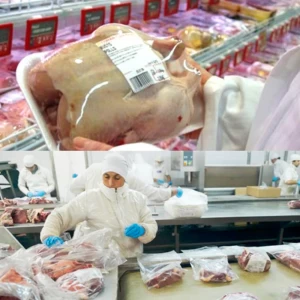ANIMAL WELFARE, REALITY IS HERE

With time, the initial resistance towards a concept that in its original packaging looked like something expensive and impractical imposed on us by the European markets as yet another barricade to free trade. Now we all know that it is the consumer who drives this process and whoever wants to have a piece of the cake needs to prove his worth. Besides, we also know about the negative economic impact on poor quality management, so these days very few, if any, reject anyone talking about the practical implications of good animal welfare.But, words are not enough decisive action is needed.The first glaring contradiction between all the talk and the reality on the ground is that there is no common strategy for with what criteria and on which terms a comprehensive animal welfare program suited to meet the needs of all industry stakeholders should be designed, let alone implemented. What is a reasonable animal welfare program for an Argentine cattle owner? Or, the poultry producer, or the pork producer?And how would such programs then be compatible with the needs of the transport industry, or the slaughterhouse industry?Who would effectively and credibly certify these programs? Based on which scientific facts? Based on which legislation? Would it stand up to the scrutiny of skeptical consumers? So many questions - who will give the answers?Considering the strategies of our neighbors in the region, their nascent success has been derived from the concerted efforts of many; the scientists have met with the politicians, the politicians with the industry representatives, the industry representatives have told the scientists what they need and with all this tangible results have become apparent to the parties involved.In Chile, in addition to the PABCO scheme as negotiated with both the EU and the US, authorities recent passed a new law that in effect will regulate maximum transport times for production animals. Another feature is that animal health authorities are cooperating with academic institutions and offer specialized courses for official veterinary surgeons, and other industry stakeholders so that they are brought up to date on recent developments on the scientific front as well as on the legislative front of animal welfare.Brazil is well into the integrated process approach, where EMBRAPA, the state-run agro service, offers the scientific backbone and the industry is very quick in providing competitive solutions.Uruguay too, is advancing in the field, with its Uruguayan Natural Beef brand, where the animal welfare protocol is written into the brand specification, complete with a certification program, and on top they have gained a much-coveted co-branding with the USDA, the USDA Verified Process logo.In May this year, one year after the first international conference on animal welfare, the OIE ratified the first international guidelines on animal welfare.Obviously, being guidelines, they are by no means binding for the undersigning countries. However, the authors of the guidelines have taken great care to make sure that the member countries without sufficient legislative or other technical background can use these guidelines as a template to develop their own, based on the needs and realities of each country.In other words, soon there will be no excuse for not having a comprehensive animal welfare program in place.And, since the WTO (OMC – Organizacion Mundial de Comercio) recognizes the OIE as the authorative body on animal health, future claims of unfair trade due to animal welfare requirements will very likely not be taken very seriously. Indeed, I think that anyone making such claims will politely but decisively be referred to the OIE guidelines and told to get serious.Two years ago when we here at AmeriCarne started this strange odyssey into the unknown land of animal welfare, we pointed all of this out, and time has proven us to be right.And we will continue to point out the market tendencies as we see them coming.As we now put behind us the first stage of introducing animal welfare as a comprehensive quality control system in food production, we now invite our readers to accompany us during stage two, discuss and design a suitable animal welfare strategy for today’s Argentine food industry, based on scientific proof and consensus between the main stakeholders of the supply chain.




